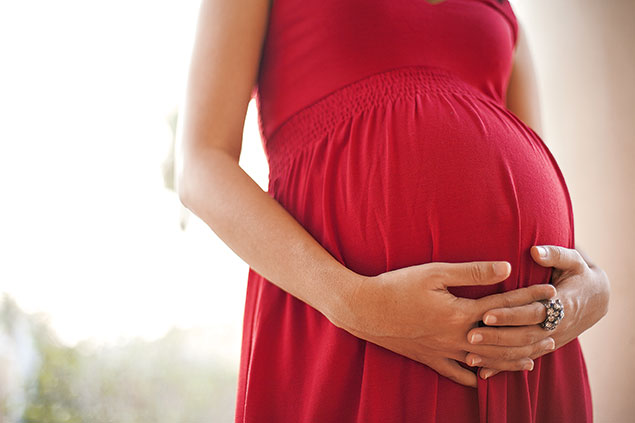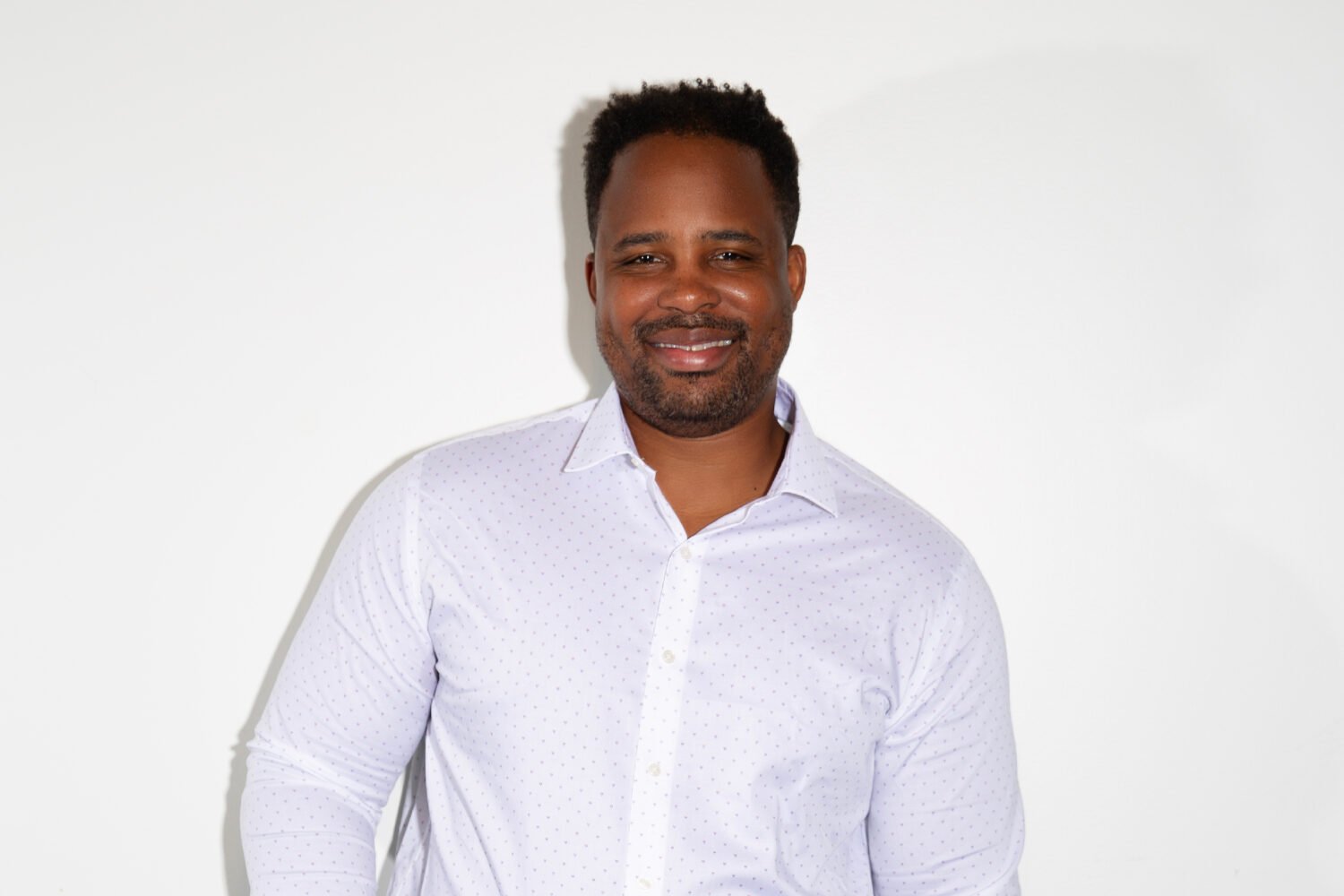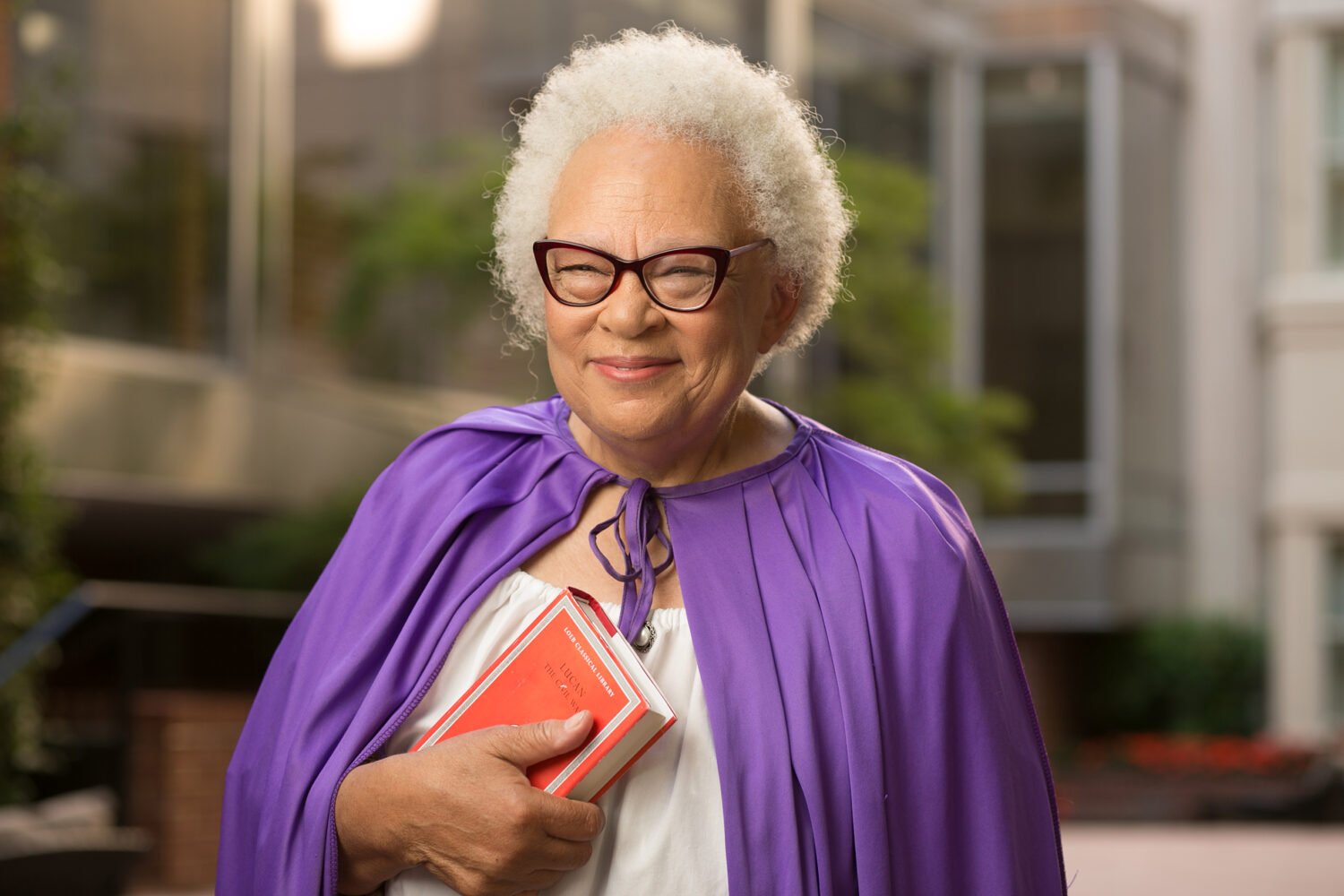On the Monday after Mother’s Day this spring, Anne C., an accomplished Bethesda entrepreneur who had always dreamed of becoming a mother, was 15 weeks pregnant and scheduled for an amniocentesis, a test that determines genetic disorders in fetuses. Because she was 43, the risk of Down syndrome and other chromosomal abnormalities should have been about 1 in 50. Yet for her pregnancy it was 1 in 90 because the egg that resulted in Anne’s pregnancy was chronologically only 40 years old, having been frozen in 2010 after an acrimonious divorce left her wondering if she’d ever be able to have biological kids.
Thanks to advances in oocyte cryopreservation, or egg freezing—and at a cost of $60,000—Anne had essentially become her own egg donor. In the process, she managed to outsmart her biological clock.
The new buzzword in feminist and fertility circles is “social egg freezing,” referring to the fact that the procedure is a lifestyle choice. Until recently, freezing was done almost exclusively to try to preserve fertility when a young woman was facing a medical condition such as cancer, which can cause sterility.
Celebrities including Sofia Vergara and a pre-pregnant Kim Kardashian have openly discussed their decisions to freeze their eggs. Former State Department director of policy planning Anne-Marie Slaughter (the first female to hold the post) wrote in a 2012 Atlantic essay, “Why Women Still Can’t Have It All,” that upwardly mobile women busy chipping away at the glass ceiling should have children by age 35—or put their eggs on ice. The article became widely circulated on the internet, with 218,000 shares on Facebook alone.
• • •
In an unassisted race against a ticking reproductive clock, women are almost always certain to lose: By age 30, nearly 90 percent of their eggs are gone forever; by age 40, only about 3 percent remain. Scientists have tried for years to save those eggs before they dwindle, but while sperm has been successfully frozen for more than 60 years, the “experimental” label was lifted from oocyte cryopreservation by the American Society for Reproductive Medicine (ASRM) only last October, thanks to a new flash-freezing process called vitrification.
“It’s a no-brainer to freeze sperm—you could actually freeze them in water and they’d survive because they’re the smallest cell in the body,” explains Fady Sharara, an infertility specialist at the Virginia Center for Reproductive Medicine in Reston. However, he adds, “the egg is the largest, with a large water content, which historically led to crystal formation. Vitrification significantly minimized that damage so that thaw rates are almost identical to using fresh eggs.”
According to several studies, those thaw survival rates—indicating the eggs that are viable—are an astounding 90 to 97 percent. About 40 to 60 percent of women in the studies who underwent in vitro fertilization using previously frozen eggs were able to achieve pregnancy on their first IVF attempt, a rate similar to that of using freshly harvested eggs. According to ASRM, the 1,000-plus reported births from eggs frozen via vitrification show no increased risk of birth defects compared to those conceived naturally.
To hear local fertility specialists tell it, all of these numbers amount to a boom in interest. Type “oocyte cryopreservation washington dc” into Google and you’ll get about 692,000 results.
“You have a lot of women in this area who may be marrying later, who focused on their education and career during their twenties, when fertility is at its peak,” says Dominion Fertility medical director Michael DiMattina, whose youngest social-egg-freezing patient to date was 32. “It’s not unlike disability insurance. You hope you’ll never need it, but if you’re delaying childbirth until after 35, you can fall back on it. I have five patients signed up right now to do it.”
Shady Grove Fertility, whose network of clinics span DC, Maryland, and Virginia, performed 131 cryopreservation cycles for women banking their own eggs in 2012—up from 44 in 2010.
At the Virginia Center for Reproductive Medicine, Dr. Sharara is also fielding inquiries—which doubled between 2011 and 2012 and are still going strong this year—but one factor often puts the brakes on moving forward: “You have women in their mid- to late forties saying, ‘I want to freeze my eggs right now,’ and I think, ‘What eggs are you talking about?’ These are often women for whom 40 is the new 30 when it comes to how they look and feel, but ovaries are on their own timeline—they’re either your chronological age or even older, but never younger.”
The survival rate for eggs in the over-40 set is so dismal that Sharara and most other fertility specialists generally draw the line at age 40, making Anne (and Sofia Vergara) notable exceptions. But at $10,000 to $15,000 per freezing cycle—more than one cycle is often required to harvest enough eggs—many younger women find the cost prohibitive.
“That’s the quandary,” Sharara says. “Women under 35 often don’t have the financial resources, and those over 40 don’t have the reproductive resources.”
• • •
With her 34th birthday approaching, Jennifer R., a Reston marketing consultant, was well aware of her biological clock. “I had a great life and a wonderful boyfriend, but a part of me was very sad that I wasn’t in a place where I was ready to have children,” she says.
Though she was in a relationship that seemed to be heading toward the altar, her boyfriend was almost ten years older with children from a previous marriage, and he wasn’t sure if he wanted more. Complicating matters was the vasectomy he’d had before meeting her, meaning they’d likely need to undergo IVF treatments if they did decide to conceive together.
“I knew that I wanted to have kids with him, but if we broke up I didn’t want to feel like two years of my life were wasted and that I’d have to start all over again at 38 or 40 and not be able to have children,” she says.
After a coworker suggested Jennifer look into egg freezing, she researched it and told her boyfriend that night that she wanted to do it. He offered to pay. “It definitely took the pressure off of him to hurry up and decide if he wanted to be a dad again,” she says, “and it let us enjoy our time together without the worry of it being too late to try in a few years.”
A few months later, Jennifer had 12 eggs extracted from her ovaries. Eight were viable, enough for two IVF cycles. “What he gave me was so much bigger than a diamond,” she says. “He gave me life.”
Melanie B. froze 18 eggs immediately after a divorce at age 35. Her decision was helped by two divorced friends who’d had to rely on donor eggs to get pregnant during their second marriages.
For Melanie, the subject serves as a deterrent for potential Mr. Wrongs. “Some guys say it’s unnatural and weird, or they seem scared—probably because they’re not sold on the idea of having kids,” she says. “But that just weeds out the ones who aren’t a good fit for me.”
The majority of men, Melanie says, commend her for thinking ahead and being purposeful about following her dream. As a senior practice liaison for Shady Grove Fertility, she’s occasionally asked on a first date if she has frozen her eggs: “It’s surprising how many single guys know about it, and that my decision is actually a relief for them because they’re used to dating women my age who try to hurry the relationship and talk nonstop about having babies.”
The procedure is fairly straightforward, though hardly simple. After a diagnostic workup that includes blood draws and ultrasounds to determine the quantity and quality of eggs, the patient is placed on medications (usually injections) to stimulate the ovaries to produce more eggs than they normally would. This often can be the toughest stage of the process. “People underestimate how mentally and emotionally exhausting—and physically painful—it is,” Jennifer says. “I cried at the drop of a hat.”
After 10 to 14 days—assuming the eggs grow and mature—they’re harvested from the ovaries via a minimally invasive procedure performed under light sedation. The oocytes are frozen unfertilized. Unlike freezing embryos—which until recently were a safer bet to achieve pregnancy—eggs don’t carry the same burden of ethical issues, says Dr. DiMattina. He regularly sees patients who would rather not be forced to make the hard decision of what to do with leftover embryos.
“If I have to get rid of my eggs one day, it’s like having a menstrual cycle,” Jennifer says. “But embryos are different—I don’t know how I would handle that.” Instead, her thawed eggs will be combined with sperm only when she’s ready to use them, creating embryos that will be implanted in her uterus.
“Six to eight mature eggs are the benchmark for one successful pregnancy,” says Shady Grove reproductive endocrinologist Gilbert Mottla, Anne’s specialist. “Of course, the more eggs you have, the better. If you hope to achieve two pregnancies, 20 eggs is the magic number.”
For Anne, this meant eight grueling cycles—one per month—during which she gained 30 pounds. Three cycles didn’t make it to the retrieval point because not enough eggs matured, even after a week or more of injecting herself with medications that cost $450 a day. “They just could not get the eggs out of me,” she says. “I kept saying to myself, ‘You need to make sure that you have enough money to send these kids to college when the time comes, and you can’t bleed all of your savings forever since you’re so close to retirement.’ The decision I had to make was: When do I stop doing this, knowing that whenever I stop, I’m closing the door to any more opportunity?”
Mottla says that age 30 to 32 is the ideal cutoff, but every woman—not to mention her reproductive system and level of determination—is different. Although a woman’s egg quality dramatically decreases by age 40, ten of Anne’s eggs were successfully thawed and fertilized using donor sperm. Of those, seven continued developing as embryos and two were transferred. One will soon result in her first child, whom she’ll be raising on her own.
“I always wanted the traditional married, family life, and I spent the years after my divorce looking for the wonderful guy with whom I could use these eggs,” she says. “But I was unsuccessful in my quest and decided not to wait any longer.”
Because the uterus is a muscle, it doesn’t have the same shelf life as an egg, says Mottla, meaning a woman can carry a child well past menopause. (The oldest case is a 70-year-old.) But by age 45, other health problems—such as preeclampsia, high blood pressure, and gestational diabetes—can pose a threat to the mother and unborn child.
According to Sharara, fewer than 10 percent of his egg-freezing patients have returned to use their eggs. Though it’s possible they were able to conceive naturally, they’re paying an annual storage fee of about $400, making it more likely they’re still waiting until the time is right to use them.
Like Anne, many women who have had their eggs frozen don’t want to wait too long. “I know I can take my time in a different way than someone who hasn’t done this—and avoid rushing things with the wrong person just to start a family—but there’s still a timeline for me,” says Melanie. “I don’t want to be the really old mom in kindergarten class.”
• • •
Not every expert is excited by oocyte cryopreservation. “We’re concerned that it creates a false sense of security,” says reproductive endocrinologist Samantha Pfeifer, who heads ASRM’s committee on reproductive-medicine guidelines. “The notion that you can get pregnant whenever you want because you have babies in the freezer is wrong. The studies that talk about a 90-percent success rate are using donor eggs in their twenties. We don’t have enough data to know what those rates will be for someone who’s freezing in her thirties or forties, but it’s probably less. And we don’t really know how many eggs these women need to freeze to ensure a live birth.”
That question may have been answered by a study in the May issue of the journal Fertility and Sterility. Using data from 2,265 egg-freezing cycles (and 1,805 women), researchers created what might be the world’s largest database on pregnancy outcomes after egg freezing. At FertilityPreservation.org, potential patients can enter their age, number of eggs frozen, and method of freezing to estimate their chances of taking home a baby one day. For example, a woman who freezes ten eggs at age 32 has a 24.3-percent chance of delivering a child but a 17.2-percent chance if she waits until age 38 to bank the same number of eggs.
Mindy Berkson, an infertility consultant and patient advocate who has herself undergone four IVFs (one of which resulted in twins) recommends getting a second—and even third—opinion before freezing eggs, to see if all of the specialists agree on the likely outcome as well as the stimulation process that will maximize the chance of success. Be sure to ask about the clinic’s actual thaw rates and the success rate of the embryologist, the person who physically handles the eggs at one of the most fragile points—and whom patients sometimes don’t meet.
Says Berkson: “Put the studies aside and ask, ‘Given my age and diagnostic workup, what are my chances of having a child?’ ”
Even then, there’s no guarantee that frozen eggs will turn into viable embryos when combined with sperm. And if the embryo grows to a point at which it can be transferred to the uterus, it’s impossible to know if it will implant. According to 2011 statistics, the latest available, just under 36 percent of IVF cycles using thawed embryos result in a live birth.
“The topic of having children is so emotionally charged, it transcends science, and the concern is that this trend is playing on fear,” Pfeifer says. “Should we be telling women to not find a partner, to just freeze your eggs and not worry about getting pregnant until you want to? I think it’s important to find a balance.”
To protect their privacy, the women quoted in this article asked that their last names not be used.
This article appears in the August 2013 issue of The Washingtonian.

















